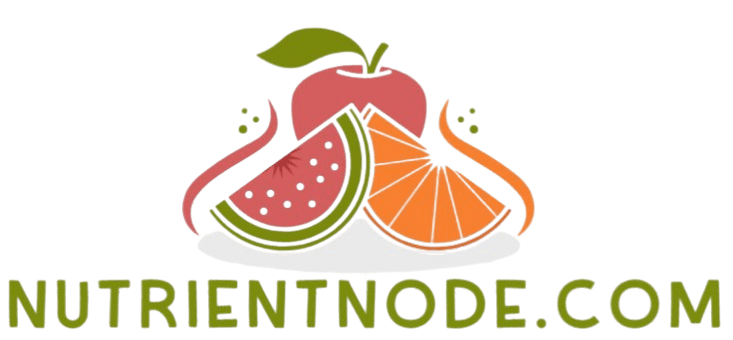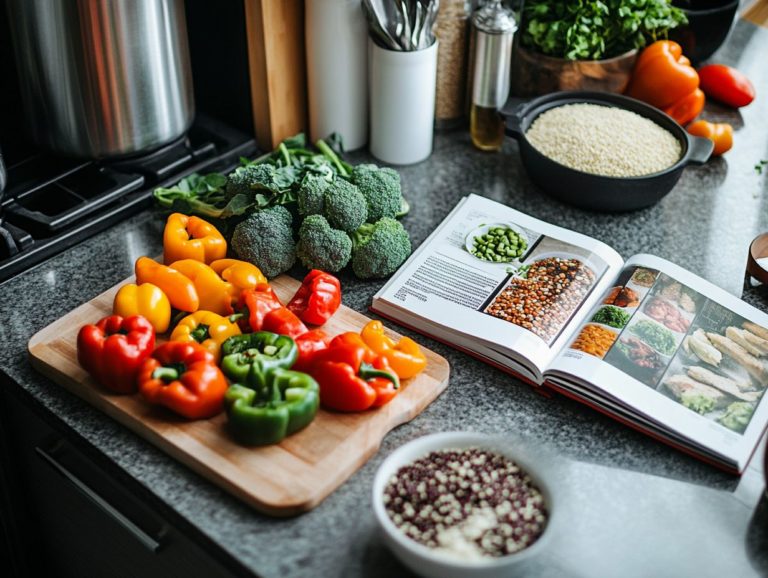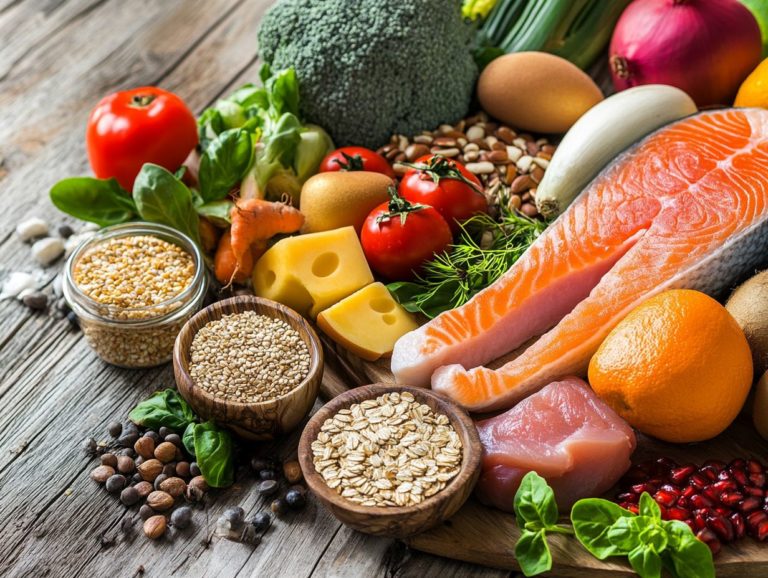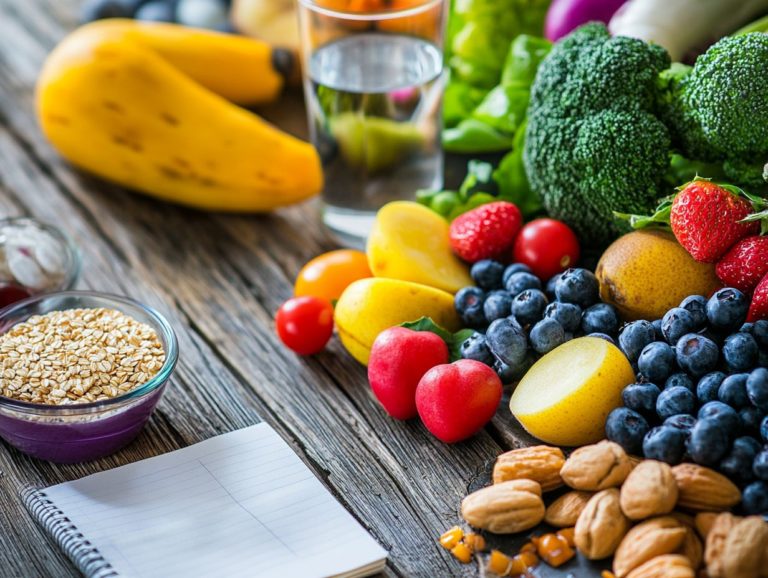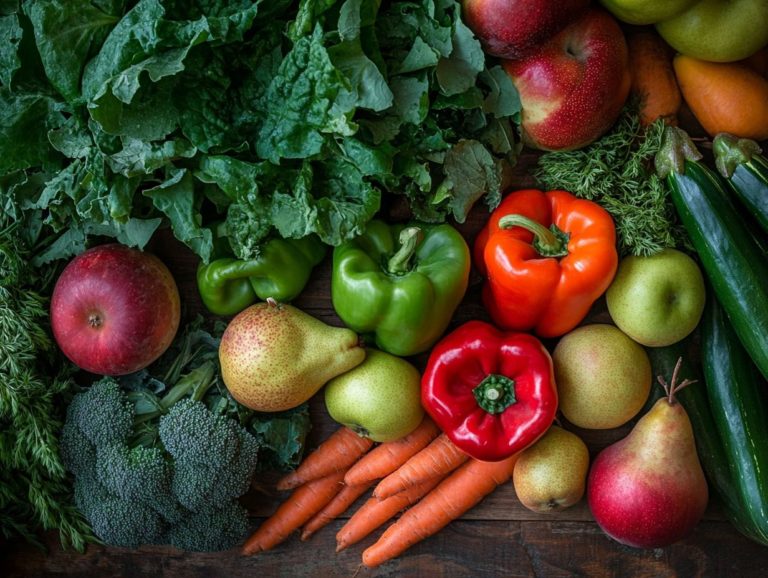5 Tips for Reading Food Labels According to Guidelines
Navigating food labels can seem daunting, but understanding their details is essential for making healthier choices.
This guide is packed with essential tips to help you read labels like a pro, from scrutinizing serving sizes to unraveling nutrient content. You ll learn to identify hidden sugars and sodium, interpret daily value percentages, and avoid common pitfalls.
Equipped with this knowledge, you can take charge of your weight management and elevate your overall nutrition.
Ready to make informed decisions during your next grocery trip? Let s jump right into it and empower your grocery shopping!
Contents
- Unlock These Key Takeaways:
- 1. Look at the Serving Size
- 2. Check the Calories and Nutrients
- 3. Pay Attention to the Percent Daily Value
- 4. Read the Ingredient List
- 5. Watch Out for Hidden Sugars and Sodium
- Why Is It Important to Read Food Labels?
- What Are the Benefits of Following Food Label Guidelines?
- How Can Reading Food Labels Help with Weight Management?
- What Are the Most Common Mistakes People Make When Reading Food Labels?
- How Can One Interpret the Information on Food Labels?
- What Are Some Tips for Making Healthier Choices Based on Food Labels?
- Frequently Asked Questions
- What are the five tips for reading food labels according to guidelines?
- Why is it important to start with the serving size when reading food labels?
- What should I look for when checking the total calories on food labels?
- Why is it important to pay attention to the nutrients to limit on food labels?
- What are essential nutrients and why should I check for them on food labels?
- How can I use the ingredients list on food labels to make healthier choices?
Unlock These Key Takeaways:
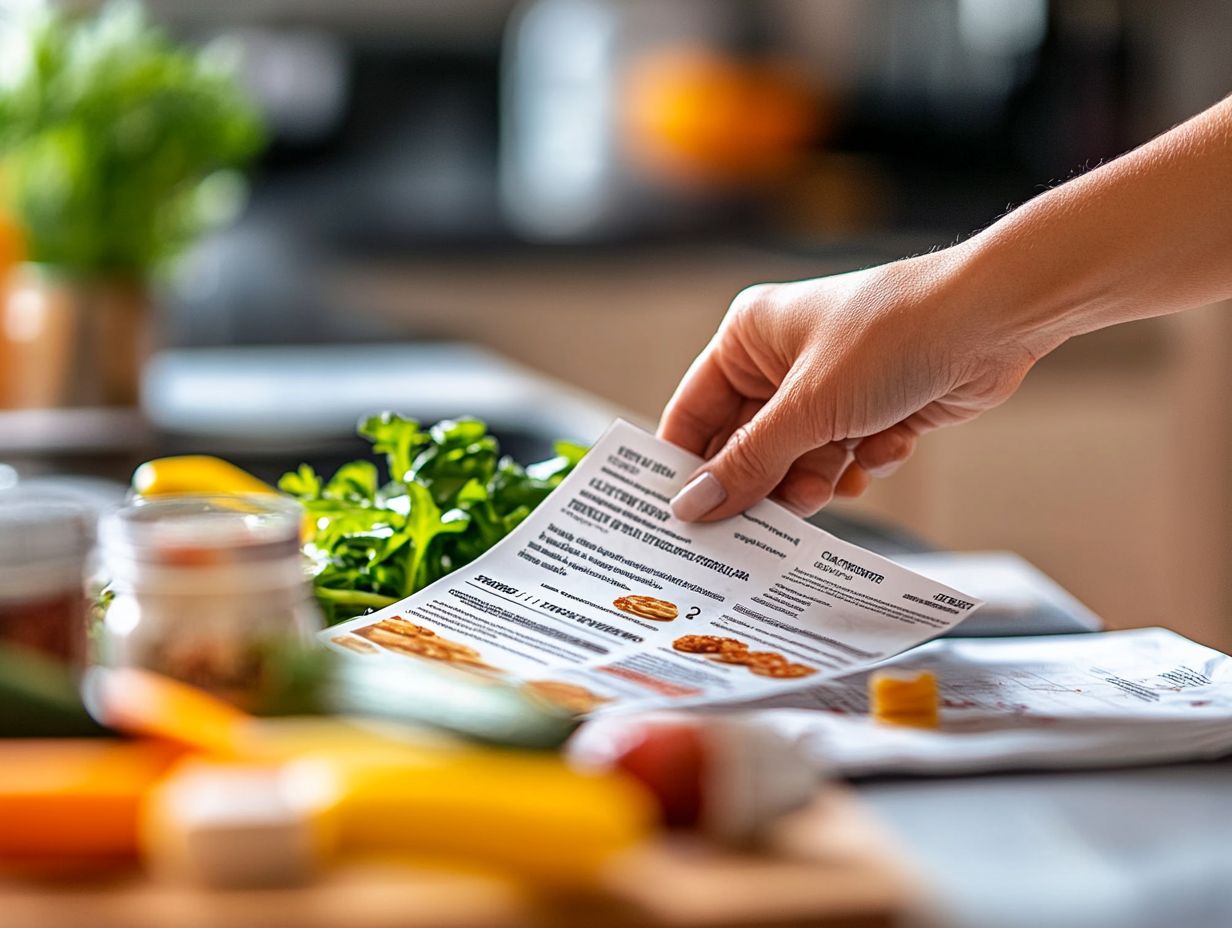
Always check serving sizes and servings per container to get an accurate understanding of the nutrients you are consuming.
Take note of the calories and nutrients per serving, and use the percent daily value to determine if a food is high or low in a particular nutrient.
Read the ingredient list to identify any hidden sugars and sodium, ensuring the food contains real, whole ingredients.
1. Look at the Serving Size
Understanding serving size is vital for making informed food choices. It directly influences your assessment of calorie count and overall nutritional value.
Different items may have varying serving sizes, which can significantly alter nutritional information. This discrepancy can impact your portion control and how well you adhere to your dietary needs.
A seemingly healthy snack could push you over your recommended calorie intake if you misinterpret the serving size. Therefore, it s essential to compare the serving size with the calorie count and fat content to gauge the nutritional value accurately.
By doing this, you enable yourself to make better choices that align with your health objectives, ensuring your dietary decisions genuinely support your overall wellness.
2. Check the Calories and Nutrients
Checking the calories and nutrients on food labels can greatly enhance your understanding of a product’s health implications. This is especially important when managing saturated and unsaturated fats in your diet.
By evaluating the total calorie count along with the nutrient breakdown, you can make informed and enabling food choices. Saturated fats, commonly found in red meat and full-fat dairy, can raise cholesterol levels and increase the risk of heart disease.
On the flip side, unsaturated fats found in foods like avocados, nuts, and olive oil provide protective benefits for your heart health. Recognizing these differences fosters better nutritional habits and helps you create balanced meals.
When you’re grocery shopping or dining out, opting for lower saturated fat options while incorporating healthy unsaturated fats can lead to improved health outcomes.
3. Pay Attention to the Percent Daily Value
Understanding the Percent Daily Value (%DV) on food labels is essential for evaluating how a food product fits into your daily dietary guidelines, particularly regarding sodium content and added sugars.
This system provides a clear percentage indicating how much a nutrient in a serving contributes to your daily diet, enabling you to make informed choices about what you consume.
For example, keeping an eye on the %DV of sodium is crucial if you’re managing heart health; excessive intake can elevate blood pressure, posing a significant risk for heart disease.
Being mindful of added sugars is vital for diabetes management, as high sugar consumption can lead to spikes in blood glucose levels.
By prioritizing foods with lower %DV for sodium and added sugars, you can significantly enhance your overall health and well-being.
4. Read the Ingredient List
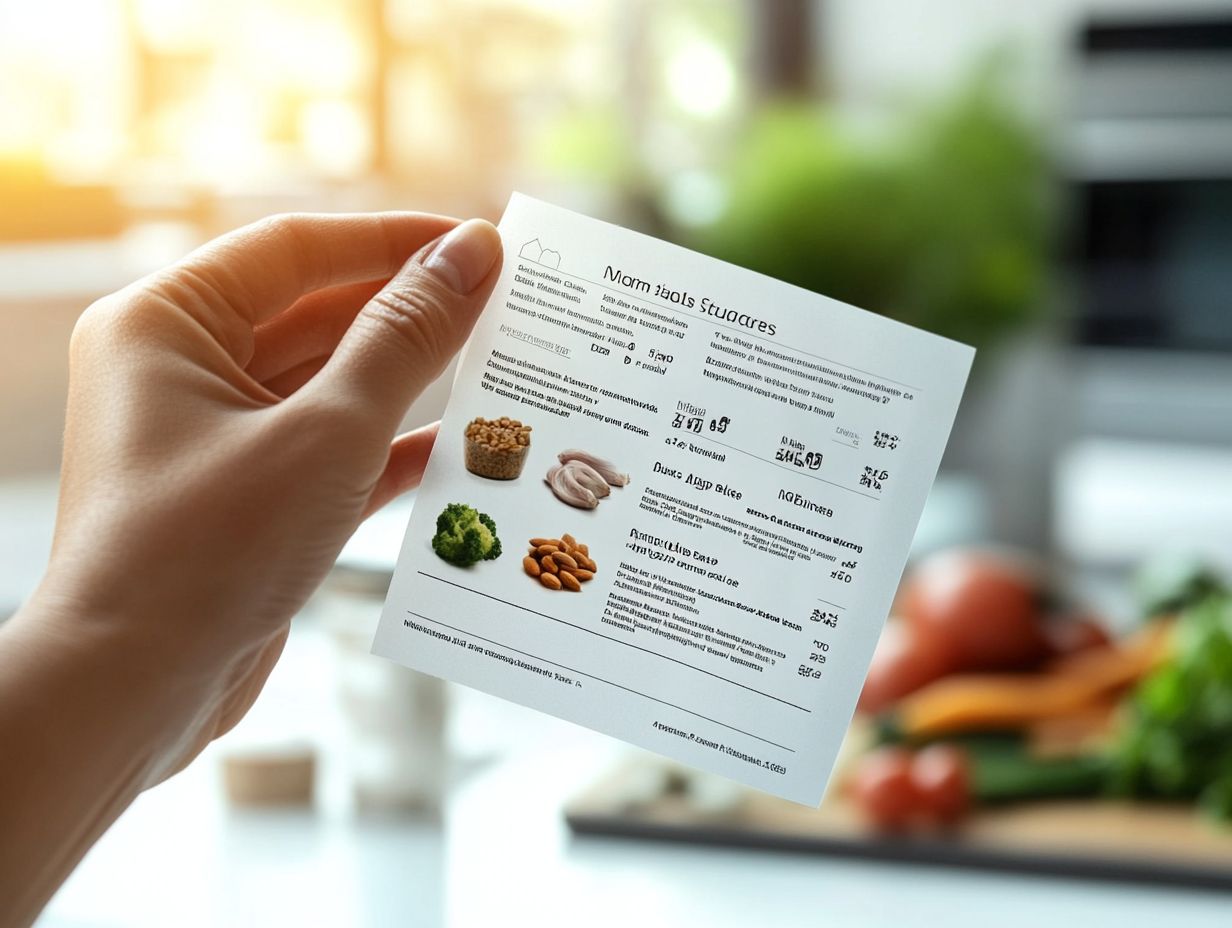
Reading the ingredient list on food packaging is crucial for understanding what goes into your meals. It helps identify processed foods and assess the health claims made by the food industry.
By examining the ingredients, you can spot added sugars often disguised under various names. Artificial additives might compromise your health, so being vigilant can significantly influence your dietary choices.
Organic certification is a marker of purity and quality. It ensures your food is free from harmful pesticides and chemicals, enhancing safety and supporting a health-conscious lifestyle.
5. Watch Out for Hidden Sugars and Sodium
Be alert for hidden sugars and sodium in food products. These can pose health risks and affect your eating habits.
Look closely at both the ingredients list and the nutrition facts table. Sugary additives can appear under names like fructose, cane syrup, or agave nectar, so familiarize yourself with these terms.
Sodium may go by labels like sodium benzoate or MSG. When you see “natural flavors,” proceed with caution, as they can indicate added sugars.
High consumption of sugar and sodium can lead to health issues like obesity and heart disease. This highlights why it s so important to make smart food choices!
Why Is It Important to Read Food Labels?
Reading food labels is essential for making informed choices. They provide vital nutrition information, including how to recognize nutritional labels that align with your dietary needs.
Understanding these labels helps you differentiate between nutritious options and those with unhealthy additives. You might notice, for instance, that low-fat products could be packed with sugar to mask flavor.
Knowing the importance of serving sizes and ingredient lists enables healthier choices. It encourages you to incorporate whole foods and avoid processed items.
With this knowledge, you can navigate grocery aisles effectively. This leads to better eating habits and long-term wellness benefits.
What Are the Benefits of Following Food Label Guidelines?
Following food label guidelines offers you several advantages. You gain a clearer understanding of nutritional labels in dietary guidelines and improved food quality.
Choosing products with lower saturated fats and sugars promotes heart health and weight management. Opting for whole grain options over refined grains boosts fiber intake and regulates blood sugar levels.
Diving into food label details helps you avoid unhealthy additives. These intentional choices can transform your lifestyle, like cooking more at home and trying fresh produce.
How Can Reading Food Labels Help with Weight Management?
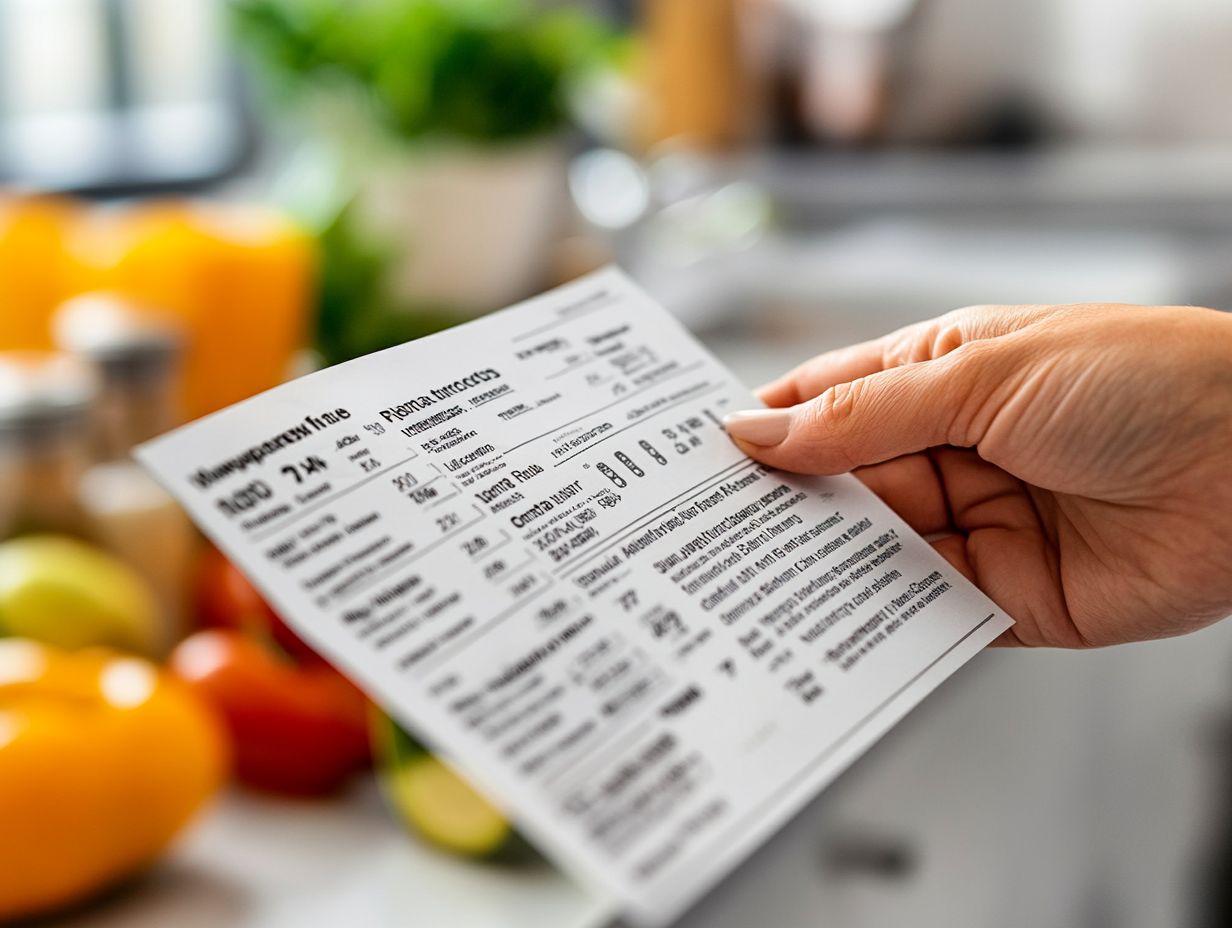
Reading food labels is a powerful ally in your weight management journey. They help you track calories and make informed food choices.
By grasping the nutritional content such as fat levels and other essential nutrients you can take a proactive approach to dieting. This supports a balanced lifestyle.
To make the most of food labels, start by focusing on serving sizes to accurately gauge portions. Then assess the total calorie count per serving.
Keeping an eye on fat content, particularly saturated and trans fats (unhealthy fats that can increase heart disease risk), can further bolster your efforts in managing weight and enhancing your overall well-being.
What Are the Most Common Mistakes People Make When Reading Food Labels?
Many consumers often stumble into common pitfalls when reading food labels. They may be swayed by misleading claims and misunderstandings of nutritional content.
These errors frequently arise from simple oversights, such as misinterpreting serving sizes. This can significantly skew your perception of a product s healthfulness.
For example, a snack might appear lower in calories per serving, but it s easy to munch through multiple portions in one sitting without realizing it.
Ignoring ingredient names can also backfire, as some products cleverly disguise sugars and unhealthy fats under unfamiliar terms. Familiarize yourself with common terminology and scrutinize serving sizes.
Don t skip the comparison! It’s your key to smarter choices between similar products to make informed and healthier selections.
How Can One Interpret the Information on Food Labels?
Interpreting the information on food labels requires a clear understanding of nutrition and health regulations. This comprehension is essential for anyone looking to make informed choices about their diet.
Food labels typically showcase several key components, such as:
- Serving size
- Calories
- A breakdown of nutrients, including fats, carbohydrates, proteins, vitamins, and minerals
Health regulations play a pivotal role in guaranteeing that these labels convey accurate information. For example, when a label claims a product is low in fat, it can assist you in managing your dietary intake.
However, it is also important to look beyond that seemingly reassuring statement. Be mindful of added sugars or sodium levels that could negate the perceived health benefits.
By analyzing these aspects, you can navigate the often-confusing landscape of grocery shelves more effectively.
What Are Some Tips for Making Healthier Choices Based on Food Labels?
Making healthier choices based on food labels requires a strategic approach. Focus on reading nutritional content, understanding ingredient names, and evaluating overall product quality while shopping. Additionally, you can explore 5 ways to make dietary guidelines work for you to enhance your decision-making process.
This process enables you to take control of your dietary decisions and fosters a healthier lifestyle in the long run.
When you examine food labels, prioritize options with lower levels of saturated fat. High intake can lead to heart issues.
Pay close attention to sugar content, opting for products with less added sugar to maintain energy levels and curb cravings. Monitoring sodium levels is equally important, as high sodium intake can contribute to high blood pressure.
To enhance your mindful shopping practices, plan meals ahead of time and create a shopping list. This helps you avoid aisles filled with processed foods.
Frequently Asked Questions
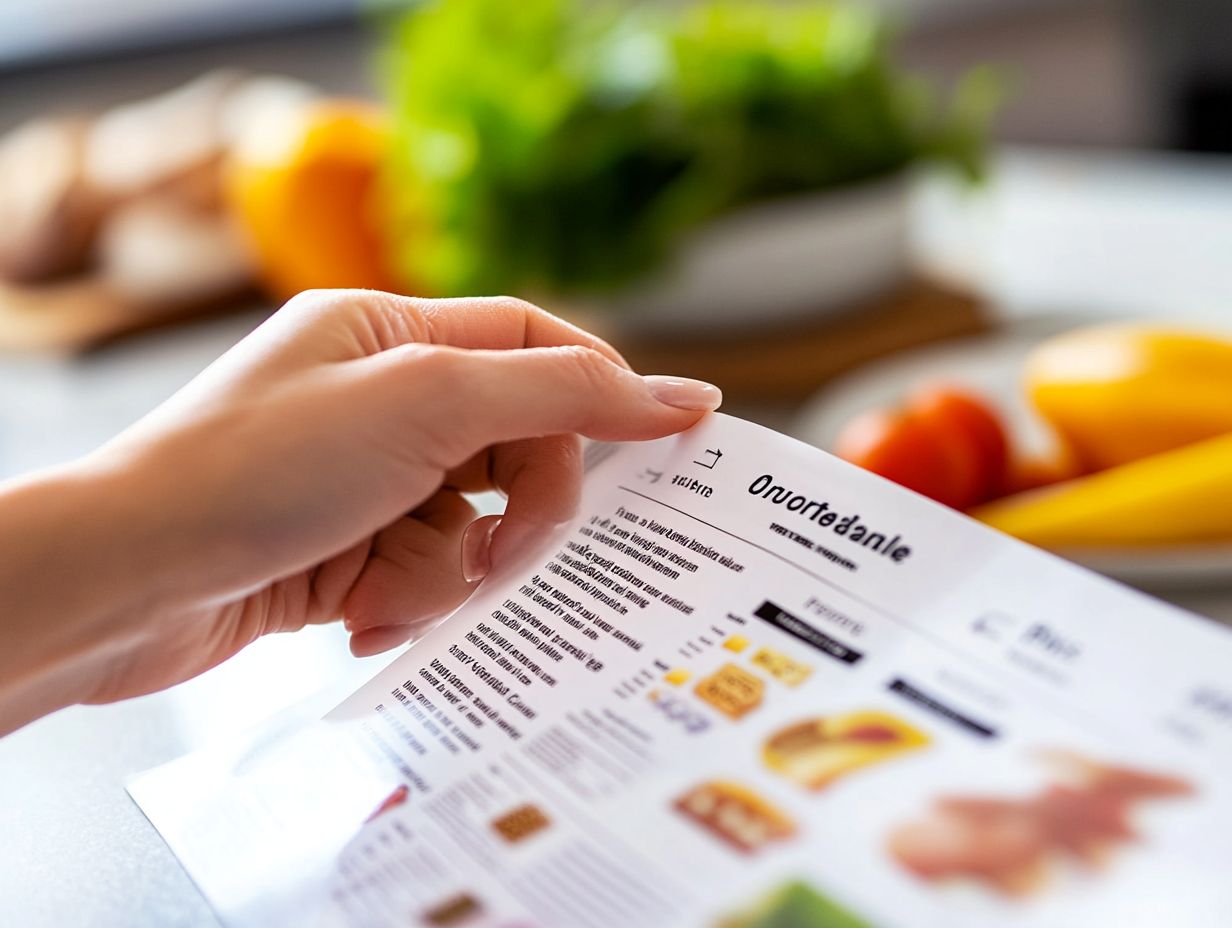
Have you ever felt confused by food labels? Understanding how to read them is essential for making healthier choices.
Start reading those labels today and take charge of your health!
What are the five tips for reading food labels according to guidelines?
Here are five essential tips for reading food labels:
- Start with the serving size.
- Check the total calories.
- Identify nutrients to limit.
- Look for essential nutrients.
- Examine the ingredients list.
Why is it important to start with the serving size when reading food labels?
Starting with the serving size is crucial. All label information is based on this measure, helping you track your intake accurately.
What should I look for when checking the total calories on food labels?
When checking total calories, focus on the serving size. Compare it to your portion and aim for lower total calories and fat percentages.
Why is it important to pay attention to the nutrients to limit on food labels?
Limit nutrients like saturated fat, sodium, and added sugars. Keeping these in check helps you make healthier choices!
What are essential nutrients and why should I check for them on food labels?
Essential nutrients are vital for your body’s functioning. They include vitamins, minerals, and certain fats and proteins. Checking labels ensures you get enough of these nutrients.
How can I use the ingredients list on food labels to make healthier choices?
The ingredients list shows everything in a product, from most to least. Choose items with fewer ingredients to skip harmful additives and hidden sugars!
